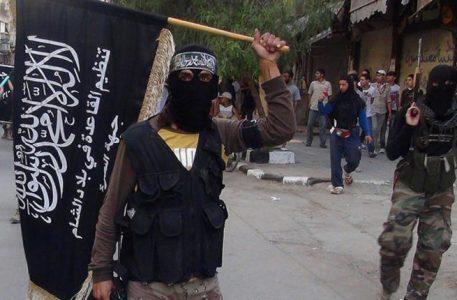
ISIS resurfaces “sleeper cells” in Syria desert
ISIS has in the past few weeks become active in Syria, apparently resorting to its sleeper cells in several regions including the so-called Badia, a vast desert area.
Counter-terrorism experts believe that ISIS is gradually turning into an al-Qaeda-like organization, albeit with an “upgraded version.”
The military operations conducted by ISIS militants are concentrated in Deir Ezzor against the Syrian Democratic Forces (SDF) on the eastern bank of the Euphrates River, where the terrorist organization’s presence is confined to a small number of villages.
The organization is also facing the forces of the Syrian regime and its allies in the desert of Deir Ezzor, specifically on the axes near the second station «T2», at the administrative border between the eastern Homs countryside and the village of Deir Ezzor.
Last Friday, the extremist group rammed into Albu Kamal on the Iraqi border in its first major incursion inside the town in more than half a year, before the regime forces expelled the militants.
The Syrian Observatory for Human Rights (SOHR) said Tuesday that it monitored clashes in the vicinity of ISIS’s last enclave in Hajin, on the east bank of the Euphrates River in the eastern countryside of Deir Ezzor, between the SDF, supported by the international coalition, and ISIS militants.
In an attempt to limit suicide bombings targeting its forces, the SDF imposed restrictions on motorcycles in Deir Ezzor during the Eid holiday because of security concerns, according to the SOHR.
The Kurdish-led force made the move after several attacks against their forces by ISIS in Deir Ezzor.
Three SDF soldiers were killed in a suicide attack on Sunday, when a man on a motorcycle blew himself up at a checkpoint. Several others, including civilians, were injured.
The attacks carried out by ISIS are not limited to Deir Ezzor. They also extend to areas in the Badia, where heavy fighting was reported between the militants and the Syrian regime in the desert of Sweida.
Experts believe that the evacuation of hundreds of ISIS militants from their last bastion in the south of the capital Damascus, including the Yarmouk refugee camp, contributed to a large extent to the organization’s active operations in the Badia.
Expert in extremist groups Abdulrahman al-Haj told Asharq Al-Awsat that ISIS suffers a shortage in fighters as “many feel that they are being defeated and no solution is looming on the horizon.”
“For this reason, the Yarmouk militants may benefit ISIS temporarily, but with time and with the death of more fighters, they will have no significant impact.”
Meanwhile, the Pentagon announced on Monday that the international coalition has increased offensive activity against ISIS in designated parts of Iraq and Syria throughout the month of May.
Since the May 1 start of Operation Roundup, the SDF resumed major offensive operations in the middle Euphrates River Valley. Since then, the SDF has continued to gain ground through offensive operations, coupled with precision coalition strike support, it said.
During the month of May, the coalition has conducted 225 strikes with 280 engagements. This demonstrates a 304 percent increase over the 74 strikes conducted in March, and a 123 percent increase over the 183 strikes recorded in April 2018, the statement added.
The coalition and its partner forces continue to exert pressure on ISIS senior leaders and associates in order to degrade, disrupt and dismantle ISIS structures and remove terrorists throughout Iraq and Syria. ISIS morale is sinking on the frontlines as privileged ISIS leaders increasingly abandon their own fighters on the battlefield, taking resources with them as they flee, said the Pentagon.
Over the coming weeks, Operation Roundup will continue to build momentum against ISIS remnants remaining in the Iraq-Syria border region and the middle Euphrates River Valley, it added.
Source: albawaba





